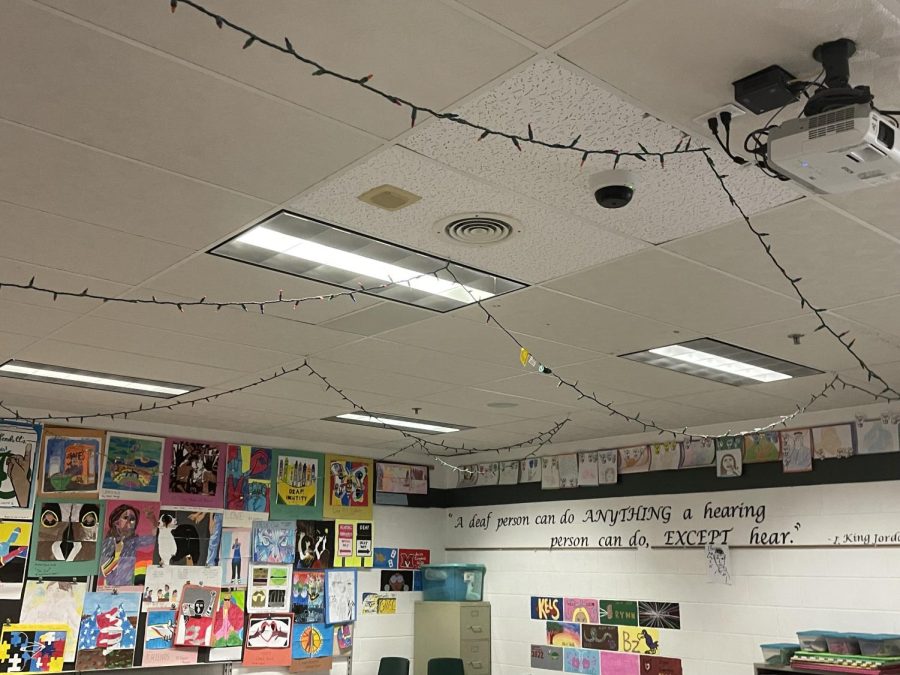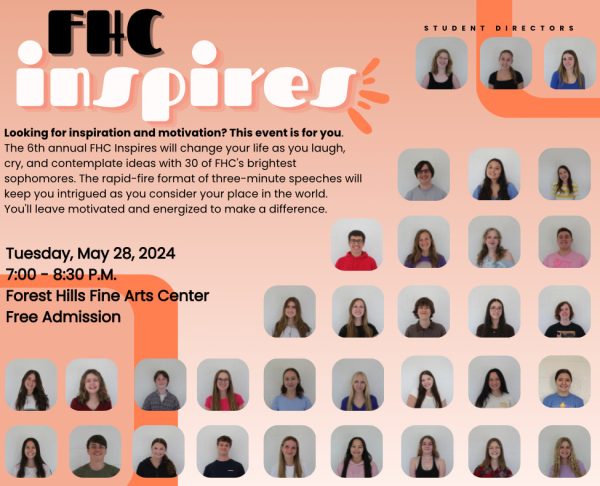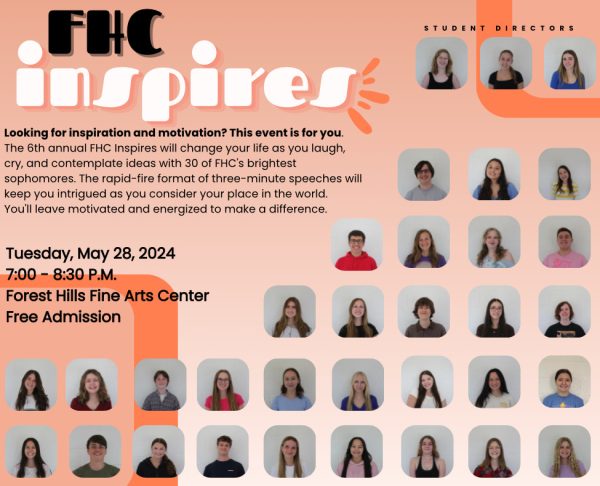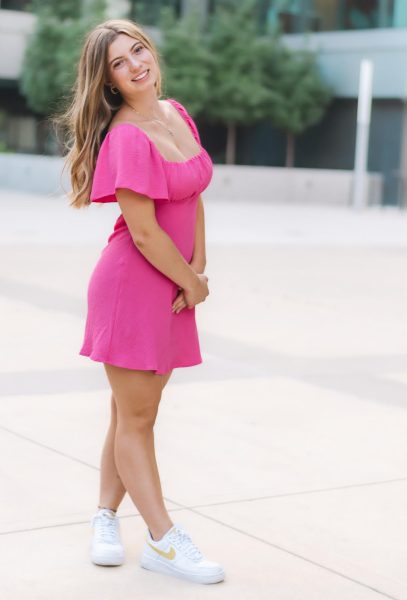Students at FHC have their preferred learning environments, and the teachers do their best to accommodate them effectively
Mrs. Anderson’s classroom’s walls are covered with personal bits of student interaction.
American Sign Language teacher Kimberly Anderson’s classroom is anything but bare: previous students’ painted wall tiles, artwork, and colored string lights are displayed in order to create a more comforting learning environment.
As many people do, Anderson prefers an open, colorful environment to work and learn in. There are many benefits to the more homey aspect of a classroom, and she embodies this as best she can in the room she teaches in.
We all know that students spend their free time with their eyes wandering, so why not have them be looking at stuff that’s both personal and educational?
— Kim Anderson
“I think having displayed work on the walls is beneficial,” Anderson said. “I know that some teachers don’t put anything on the walls, and I’ll walk into the room, and I’m concerned. Why is there nothing on the wall? Why does it look so bad? Having more things in your room brings life to the setting, and kids can see themselves reflected in what I have. I think that’s really special.”
Giving students an outlet in a classroom environment is a very important thing for teachers to do, but accommodating everybody’s needs can be tricky.
Finding the happy medium in any given classroom has its challenges—for both teachers and students—but there are many ways to do this in a way that suits everybody.
“I think you can look at [an environment] in two ways: infrastructurally and emotionally,” Anderson said. “If I’m going to learn somewhere, I’d want it to have a cohesive space where it’s organized. If desks are all over the place in different ways, that stresses me out. In terms of an environment as a feeling, creating an environment that is open and welcoming is definitely where it’s going to be best.”
Creating a loving and accepting environment is one of the most important things a teacher could do for their students, and Anderson does this phenomenally.
Anderson’s classroom has influenced many students in positive ways such as freshman Haley Groesser. Similarly to many others, Haley’s favorite classroom to be in is Anderson’s.
“I love the more homey vibe in a classroom,” Haley explained. “[Anderson’s] room is very nice to me: the decorations, the lights, all of it. When the lights are dim, [it] is really calming.”
Haley, like many, learns best in an interactive and visually stimulating environment in which creativity is encouraged.
As every student has their favorite aspects in class, they are bound to have their least favorites, too.
“I can’t deal with teachers who expect you to learn the content by yourself,” Haley said. “[If it’s] online and whatnot, they’re not doing any of the teaching in class and assigning the work online. I don’t do well with that—I learn well visually and through interaction.”
Oftentimes, the classroom environment itself can be the catalyst for misbehaving students. If this is the case, the students who want to be productive simply can’t.
Freshman Josie Nugent understands this feeling all too well.
“I hate when I’m trying to concentrate and people just keep talking to me,” Josie said. “Or, if it’s loud, I can’t do that either. I like [English teacher Morgan] Beckett’s classroom. I like the way it’s set up, and I also like that she lets us listen to music sometimes to focus.”
It’s nice for most students to be able to switch environments from class to class, but not if it’s a class that has a dynamic that’s hard to work in.
By nature, every student has their qualms in any school setting, and one of Josie’s has got to do with the partner and group systems in classrooms.
“I don’t like it when teachers assign groups and grade based on the whole group effort,” Josie said, “but some teachers accommodate, and that helps.”
Additionally, Josie and many other students tend to appreciate classrooms with more space to spread out and isolate while working.
One such student is junior Hayden Bolter, who appreciates settings in which there’s a heightened sense of comfort.
“I think decorations definitely help engage students,” Hayden said. “[Math teacher Rebecca] Lipke’s room is nice. She has these string lights, so sometimes she’ll turn off the main lights and make the lighting in the room a lot softer, and she’ll also play music so it’s a good environment to be in. There are some teachers, though, who have really boring room, or some will have too much in their room that it’s overwhelming. Some sort of decoration or element of comfort is nice.”
Hayden’s preferred learning style differs from his work style, and his ideal setting is one that can accommodate both of those standards. Many students have the same issue, and finding an equilibrium in that environment is a very rewarding feeling.
“For working specifically, I like to have an environment where I’m given the opportunity to work with my friends and do group work,” Hayden explained. “For learning, I think I can do fine with whatever. I can work well if a teacher gives me notes the whole time, or I can work well if I have projects or more interactive things. I think finding a happy medium for both would be nice.”
As many could agree, any public high school is bound to have some downsides and some advantages. The staff does their best to make it a good learning environment for everybody.
It can be difficult to do so, but students and teachers need to learn to see eye to eye on some matters and compromise on others, and that’s something that takes time and effort.
“It’s just so special to be able to let your kids look at the walls and see things that they created or that they had a part of,” Anderson explained. “And, we all know that students spend their free time with their eyes wandering, so why not have them be looking at stuff that’s both personal and educational?”
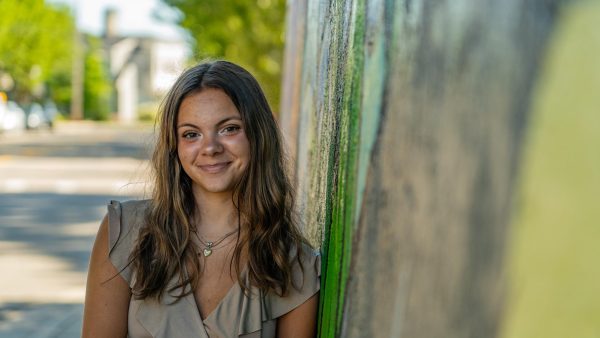
Eva LaBeau is a senior entering her second year on The Central Trend. She takes on everything she does with great passion, specifically when relating to...





















































































